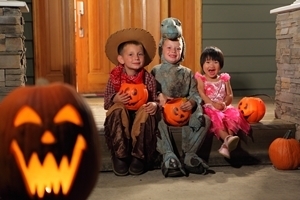As a kid, there was nothing scarier on Halloween than hearing spooky ghost stories and seeing all sorts of creepy creatures wandering down the street. As a travel nurse, you've likely found a whole new slew of horrors associated with this holiday: high rates of injury. A study published in the journal Pediatric found that Halloween is the fourth most likely day for adolescents to wind up with injuries, right behind Labor Day, Memorial Day and the Fourth of July, respectively.
Use the next month in your travel nursing career to promote safety. Here are a few tips to provide your patients:
Make sure costumes fit frighteningly well
While a baggy striped jumpsuit no doubt looks adorable on a little trick-or-treating clown, that extra slack can pose a threat to safety. Kids can easily trip on loose clothes, dangling belts or whatever makeshift material was thrown together to create a costume. Parents should inspect their child's ensemble for potential safety risks before heading out for the night.
Beware of traffic
Kids are already hard to spot while driving, as many big automobiles tower over their short stature. Add in the concealment of nightfall, and the risk for pedestrian accidents goes way up. Speaking with U.S. News and World Report, Dr. Rebecca Parker, who serves on the American College of Emergency Physicians' board of directors, said car-related incidents are most common at sunset, as the reflective glare can make it hard for drivers to see.
Encourage your adolescent patients to look both ways before cross the street and to stick to the sidewalk whenever possible. Also, talk to parents about buying reflective tape to stick on kids' costumes so drivers can more easily spot little ghouls and goblins.
Don't make this grave jack-o-lantern mistake
Pumpkin carving is a long-standing Halloween tradition but has a horrific history of causing injuries. Tell adult patients to avoid equipping kids with knives – even during the holiday. Pediatric Safety advised reserving cutting duties for kids ages 14 and older. Younger children can still have fun with this activity by drawing a goofy face on the pumpkin and having a parent or older sibling cut the shapes.
Those who are old enough to handle knives should use tools specific for pumpkin carving. These festive vegetables have an odd shape and are pretty slippery, which makes accidents all the more likely. Pumpkin carving knives are usually smaller and have grips specifically for this purpose.
Bring along a lantern
Share this tip from the U.S. Centers for Disease Control and Prevention: Carry a flashlight while trick or treating. For one, having a light source allow families to see where they're going and avoid tripping over skeleton decorations and unlit jack-o-lanterns. It also makes them easy to spot by drivers or people riding bikes. And even if kids are equipped with flashlights for safety, that doesn't mean they should run from house to house. Walking reduces the risk for falling, and it's best practice to stay in groups.
A main goal in your travel nursing career is to promote safety, and Halloween presents a prime opportunity to do just that. Giving patients these reminders ensures they'll have a spooktacular holiday.

